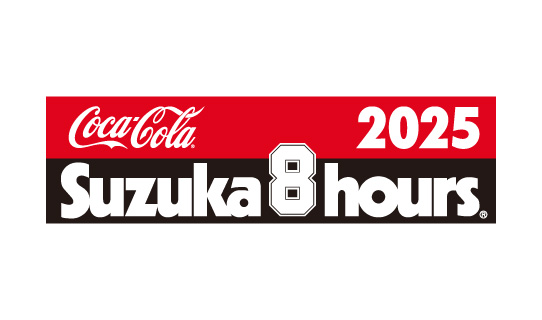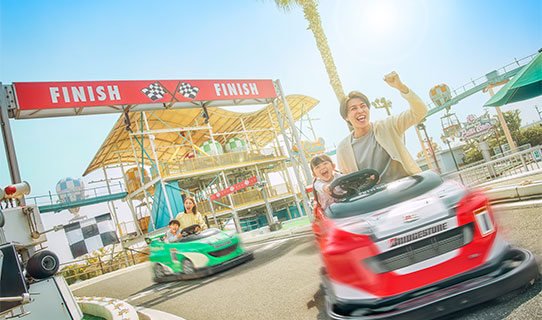November 10, 2025
SUPER FORMULA Glossary
Explanation of Frequently Heard Terms During Viewing
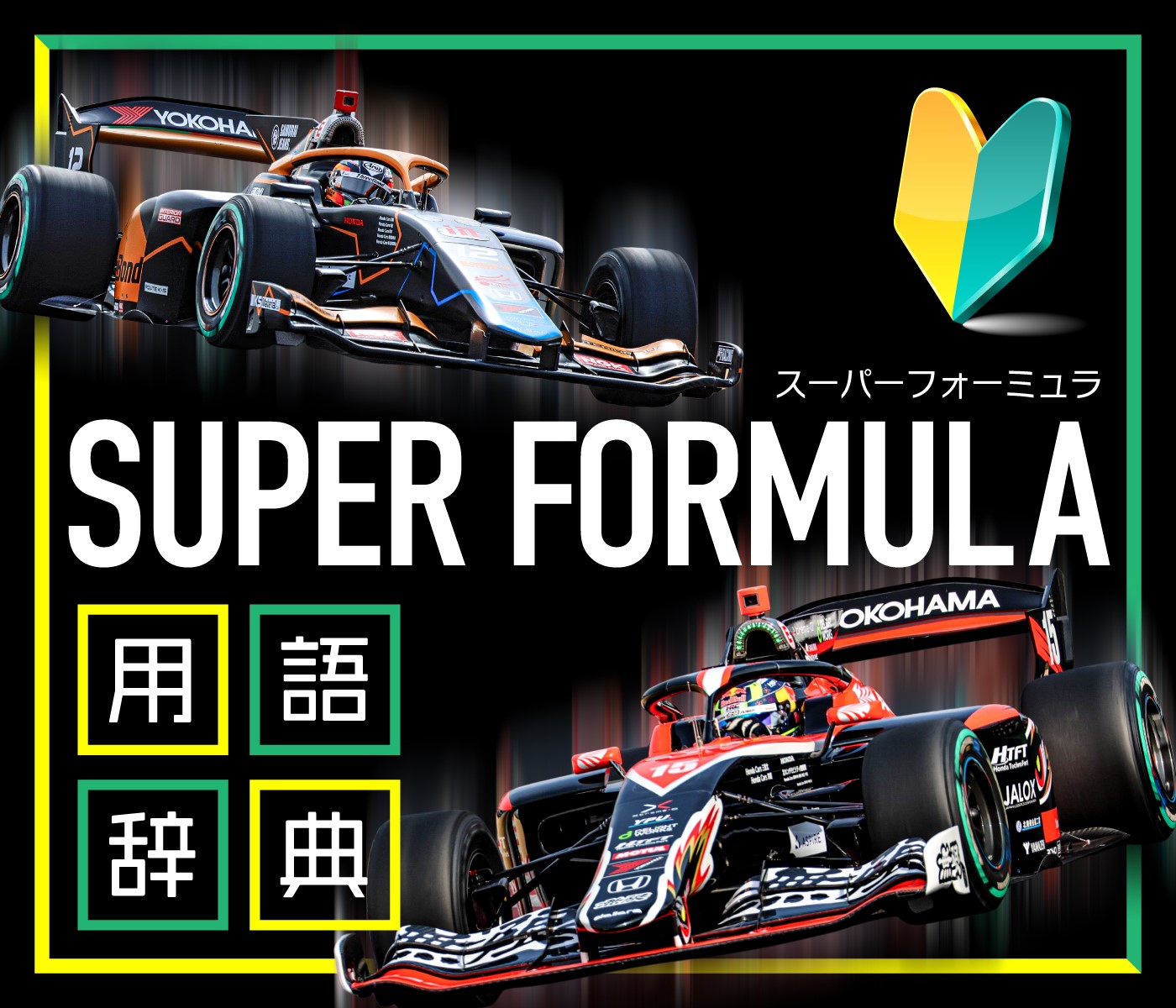
Knowing these will make watching the race even more enjoyable!
- Starting Grid
-
The position where vehicles stop in preparation for the start. It is marked with white lines, and cars line up in order from the front according to their qualifying positions. Odd-numbered grids and even-numbered grids are staggered, with an 8-meter gap between each grid. The distance between front and back positions (for example, pole position and 3rd place) is 16 meters.

- Official Qualifying
-
The time attack to compete for the fastest lap to determine the race start position (starting grid) is called "qualifying."

In Super Formula, qualifying is divided into two stages:
■Q1 (Qualifying Stage 1)
The participating cars are divided into Group A and Group B, and each group competes for the best time. The top 6 drivers from each group (a total of 12) advance to the next stage.
■Q2 (Qualifying Stage 2)
The 12 drivers who advance from Q1 compete further to determine the order of the starting positions. The fastest driver earns the front-row starting position called the "pole position."
In other words, qualifying is a crucial battle to decide "who gets to start at the very front!"
- Final Race
-
The competition is to complete the set number of laps as quickly as possible. At the JAF Suzuka Grand Prix on Saturday, November 22, and Sunday, November 23 (National Holiday), three races will be held. On Saturday, Round 11 (27 Laps or 75 mins). On Sunday, Round 10 (19 Laps or 50 mins, a substitute for the Fuji event) and Round 12 (31 Laps or 75 mins) will take place.
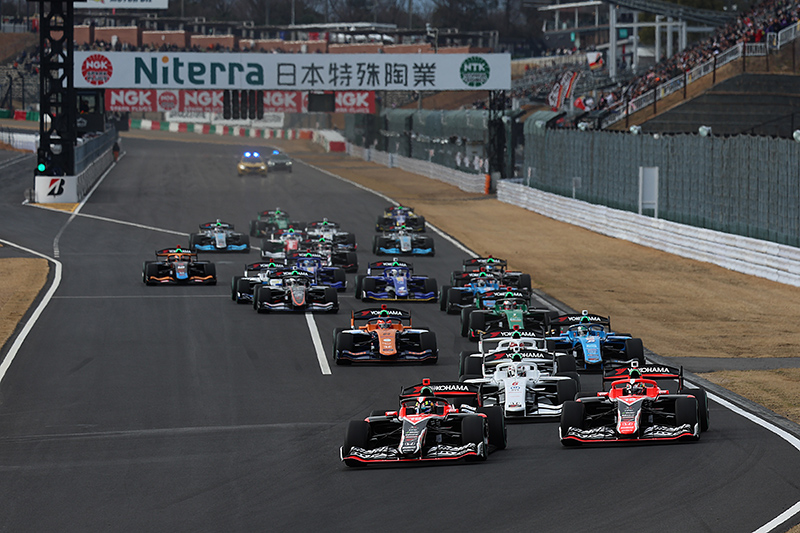
- Point System
-
In races, points are awarded according to your finishing position. By collecting many of these points, the season champion is decided.

■Points for the Final Race
1st place: 20 points
2nd place: 15 points
3rd place: 11 points
Points decrease as the positions go lower.
10th place: 1 point
11th place and below: No points
■Points are also awarded in qualifying!
1st place: 3 points
2nd place: 2 points
3rd place: 1 point
In other words, points are awarded not only in the final race but also in qualifying, so every run is very important. By accumulating points throughout the season, the annual champions (drivers and teams) are decided!
- Out Lap / In Lap
-
■Out Lap

A lap where the car goes out from the pit to the course.
At this time, the tires are still cold, making it slippery and difficult to gain speed. You need to drive carefully until the tires warm up.
■In Lap
A lap returning from the course to the pit. - This is the lap driven when heading to the pit for tire changes or other work.
- Overtake
-
Overtaking refers to passing the car in front during a race. The moment this happens is very thrilling and one of the highlights of watching the race!

■Types of Overtakes
Side-by-Side: Running side by side
Tail-to-Nose: Running closely one behind the other
■Places Where Overtaking Is Likely to Occur (In the Case of SUZUKA CIRCUIT)
At the entry to the chicane: Because drivers brake hard from high speed to enter the corner, differences in braking timing create opportunities for overtaking.
From the home straight to Turn 1: In battles at the chicane, the distance between cars becomes close, and they head toward the home straight and Turn 1 from the final corner maintaining that gap, creating opportunities for overtaking.
- OTS (Overtake System)
-
It is like a "boost function" that temporarily increases the machine's power during the race.

This allows the speed to increase for a short time, so it can be used not only for overtaking but also for defense to avoid being overtaken—truly useful for both offense and defense.
■Key Points for Use
Each car can use it for up to 200 seconds per race. The driver can turn it on and off at any timing using a switch on the steering wheel.
However, once used, it cannot be reused for a short period (the duration varies depending on the circuit), so choosing when to use it is very important.
In other words, OTS is a secret weapon for speeding up that you use at the crucial moment!
- Undercut / Overcut
-
There is a strategy during the race to cleverly time tire changes to get ahead of your opponent.
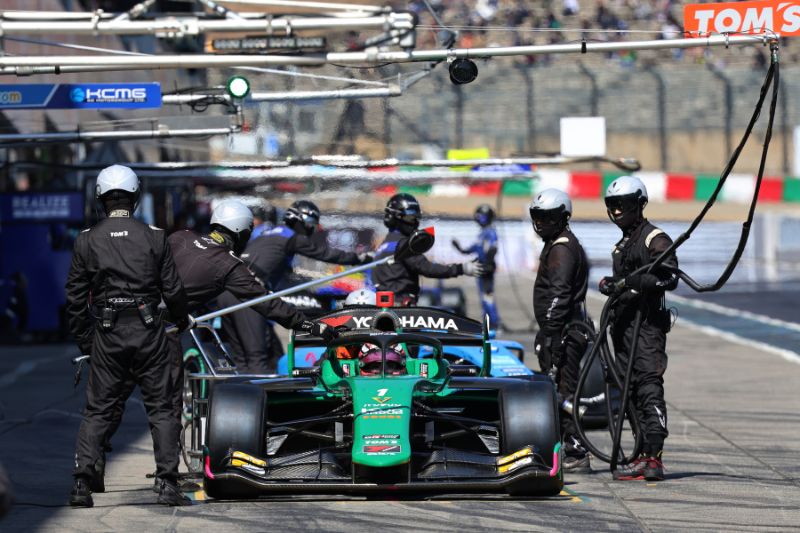
Basic Knowledge of Undercut / Overcut
Tires: Tires are fastest when new. As you complete laps, the tires wear down and your pace slows. However, new tires are still cold, slippery, and difficult to drive fast on. You need to drive carefully until the tires warm up.
Traffic: When running in a group, the gaps between cars in front and behind close up, making it difficult to run at your own pace and causing lap times to slow down. The easiest and fastest condition for drivers is when there is space between cars, like in qualifying.
■ Undercut
The strategy is to change tires first, run faster, and get ahead when the opponent makes their tire change. The opportunity arises when the opponent is stuck behind a slower car (traffic). In other words, it’s a "Change first and win with speed!" strategy.
■ Overcut
This is a strategy where you keep running faster than your opponent, change tires later than them, and overtake them instead. Since newly changed tires may not be able to run fast immediately, you use that time to build a gap. It’s advantageous if your tires can still run fast. This strategy is about "delaying the tire change to seize the opportunity!"
- Downforce
-
To make a car run fast, it needs a strong force pressing it down onto the ground. This force is called "downforce." It uses the flow of air effectively to push the car down onto the ground.
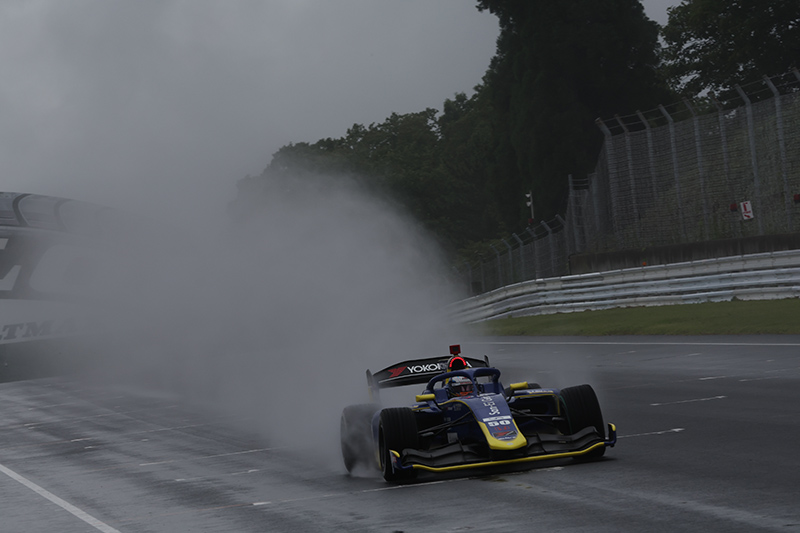
In Super Formula cars, this force is mainly created by the "front and rear wings" and the "floor" of the car.
The wing is shaped like an inverted airplane wing, cleverly using the airflow to generate a force that pushes the car downward.
The floor allows air to flow quickly between the bottom of the car and the ground, creating a suction-like force.
Thanks to this downforce, the car can run faster even through curves. This is truly the secret behind Super Formula's speed!
- Parc Fermé
-
After the race ends, the special storage area where racing cars are kept is called "Parc Fermé."
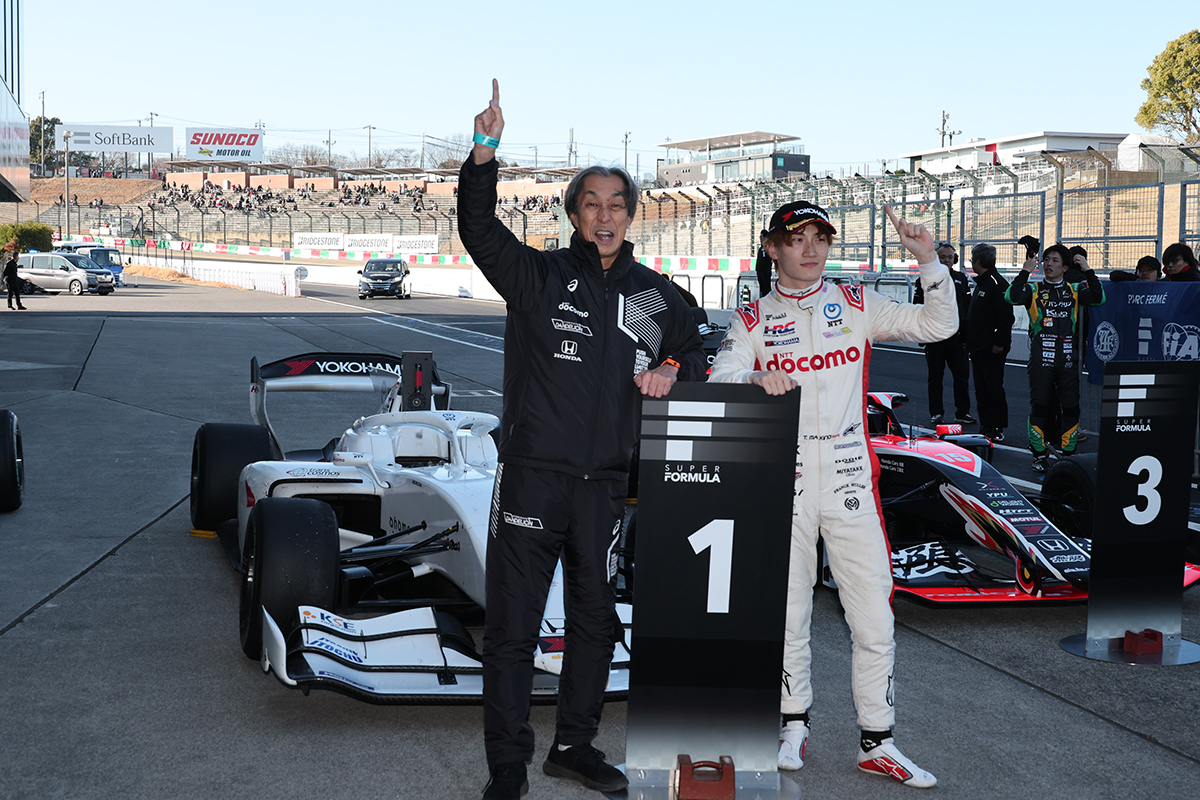
■Key Points of Parc Fermé
It is located near the place where post-race inspections (technical checks) of the machines are conducted.
Until the inspection is complete, entry is prohibited for anyone not involved. To check for any rule violations, the machine cannot be moved for a while.
It is also the place where the winning driver bursts with joy.
- PIT
-
The place where car maintenance and work are done during the race or when not running is called the "PIT."
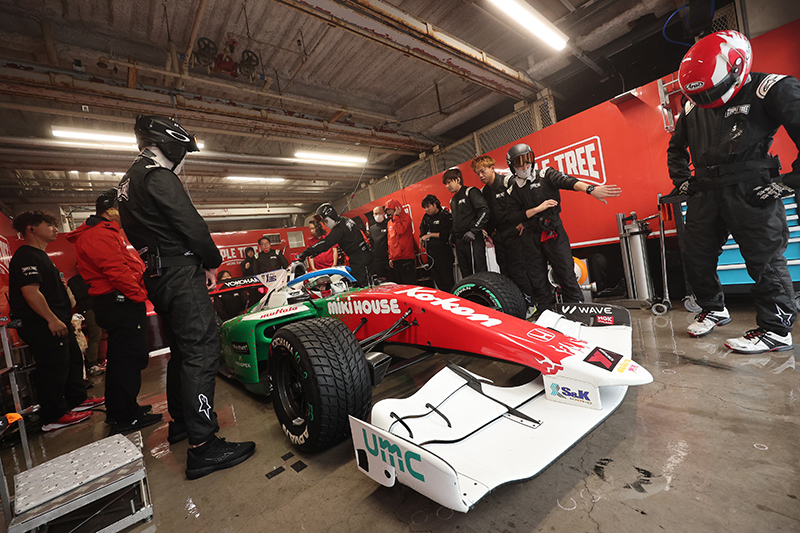
■Role of the PIT
It is the place for assembling, adjusting, and repairing the car. When not running, tire changes and setting adjustments are made inside the PIT.
■Pit Work During the Race
The car stops in front of the pit to perform urgent tasks such as tire changes or replacing broken parts. This action is called a "pit-in" or "pit stop."
- Paddock
-
This is the space behind the pits. Originally a horse racing term, it refers to the area where racehorses are walked before the race starts. It also serves the purpose of allowing fans to observe the condition of the horses. In the Super Formula paddock, the teams' racing machine transport trucks (transporters) are lined up.
 Here Is the Paddock Area!
Here Is the Paddock Area!
If you have a Paddock Pass, you can enter the paddock. It’s a great chance to see the drivers and machines up close!
>> For more about Paddock Passes, click here
- Pit Lane
-
The passage where cars leave the course to change tires or make repairs during the race is called the pit lane.
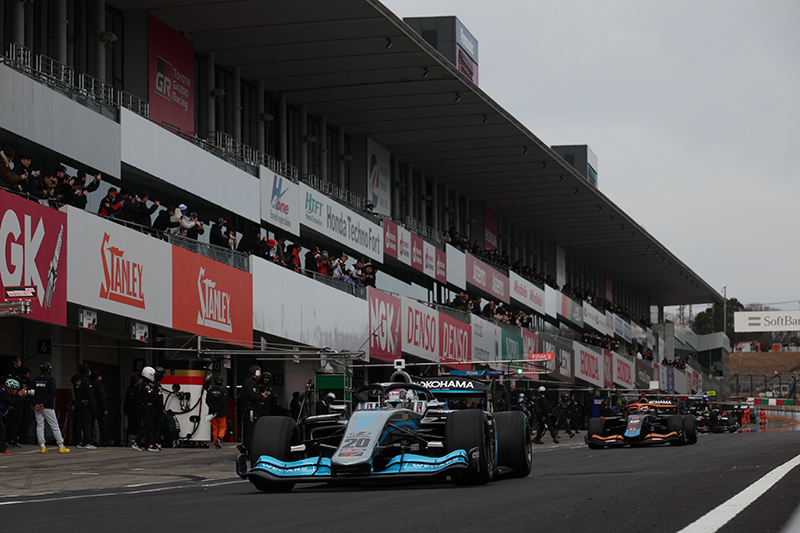
This passage has two lanes with different roles.
■Fast Lane
The lane closer to the home straight
A passage where cars can travel at speeds up to 60 km/h
■Inner Lane (Work Lane)
The lane on the pit side
Space for tasks such as tire changes
- Yellow, Green, Red Light Panels
-
To inform drivers on the track about the conditions on the course, signals are sent using the colors of the light panels on the track.

■ Yellow Light Panel
A warning signal indicating that there is an accident or trouble at a certain location.
Overtaking is prohibited in the section where this light panel is displayed.
■GREEN LIGHT PANEL
A signal that the danger has passed and normal driving can resume.
■RED LIGHT PANEL
It is used when a session (running time) is temporarily suspended due to a serious accident or worsening weather conditions.
- CHECKER FLAG
-
The flag that signals the end of the race is called the "Checker Flag." It features a white and black checkered pattern and is a very noticeable flag.
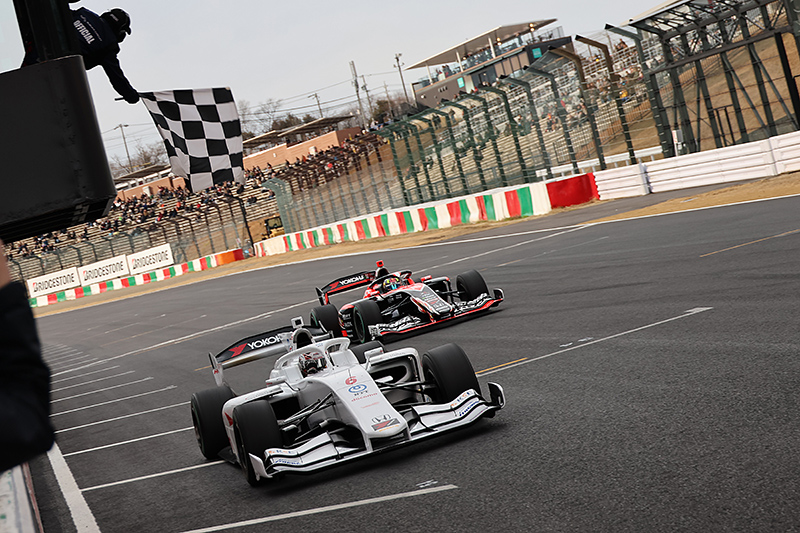
■Meaning of the Checker Flag
It is waved when the prescribed number of laps or time for the race has ended.
The checker flag is waved the moment the car running in the lead at that time passes the control line (finish line). The driver who finishes first is described as "receiving the top checker."
■What is a Double Checker?
A situation where a car on the track mistakenly receives the checkered flag twice. This can be a violation of the rules and may result in a penalty.
- Safety Car
-
A special vehicle that appears when dangerous situations occur during the race, such as accidents or bad weather, to safely continue the race. This is called the "Safety Car (SC)."
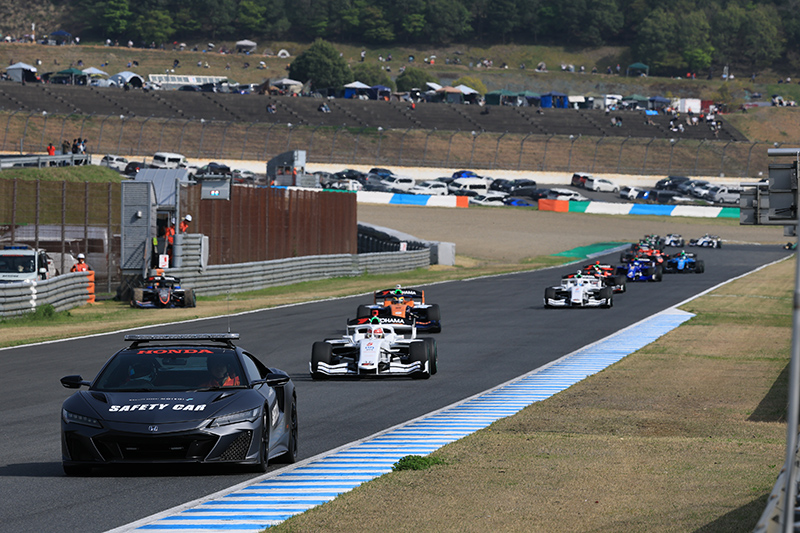
■Role of the Safety Car
It comes out onto the course to safely lead the running cars.
Overtaking is prohibited while the safety car is out. When the track is wet due to rain, the safety car may lead the start of the race.
■What does it mean when the lamp goes off?
When the safety car's roof lights go off, the race will resume from the next lap.


